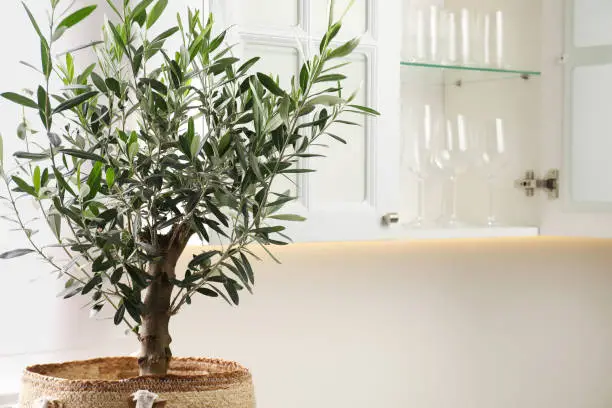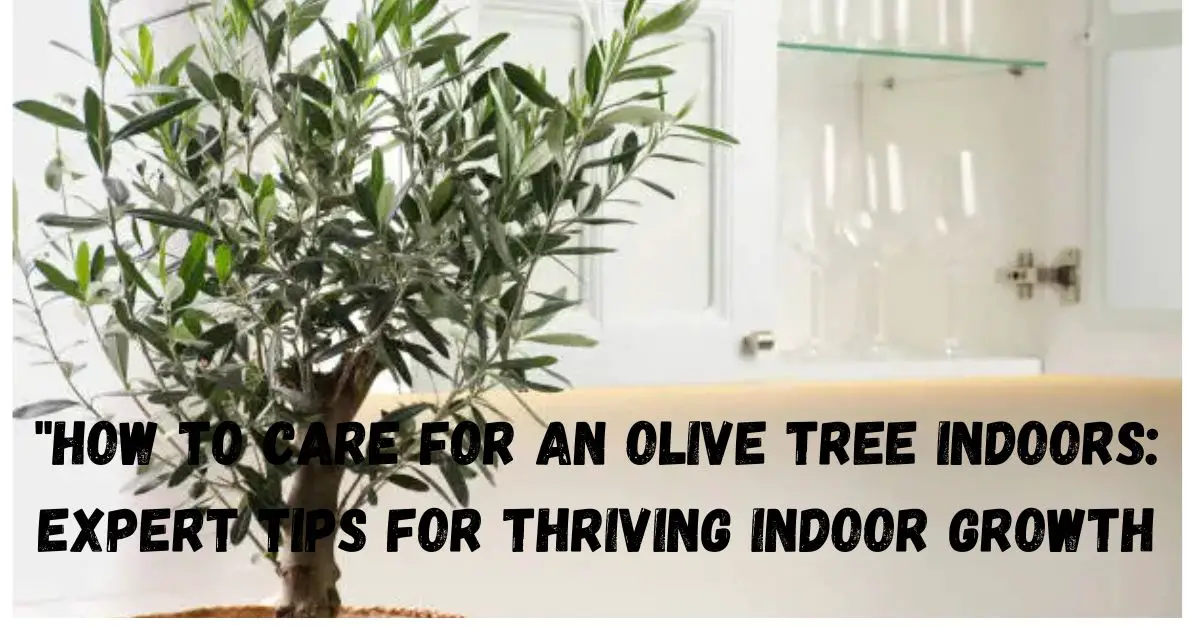Bringing a touch of Mediterranean charm into your home with an indoor olive tree is rewarding and beautiful for adding value to your indoor space. Keeping an olive tree, however, healthy and How to Care for an Indoor Olive Tree Expert Tips for Thriving Indoor Grow thriving indoors, presents a special challenge. This guide will teach you how to care for your “Indoor olive tree” so that it will remain lush and thriving.

7 Essential Tips for Indoor Olive Tree Care
Table of Contents
Why Choose an Indoor Olive Tree?
Olive trees (Olea Europaea) are not only ornamental plants but also exude peace, abundance, and resilience. The colour of their silvery-green leaves and the unpretentious attraction of such trees bring a natural and timeless quality to your home. They are as aesthetically pleasing as they are an air-purifying tool and can create a sense of serenity in your home environment.
1. Choosing the Best Type of Olive Tree
The right variety of olive tree is essential to grow indoors. Some of the best options for indoor care are these:
Arbequina: It is compact, requiring low maintenance, and usually thrives indoors.
Picholine: It is a French variety that can adapt very well and does not break easily.
Little Ollie (Dwarf Olive): It was specifically bred to thrive in smaller spaces, making it ideal for apartments.
Real-Life Tip: I planted an Arbequina in my living room because it’s small enough and forgiving. It has been a wonderful addition!
2. Potting Your Indoor Olive Tree
To care for your indoor olive tree properly:
Pot Size and Type: Use a big pot with excellent drainage. Terracotta is an excellent choice as it allows for airflow, thus preventing root rot.
Soil Requirements: Use well-draining soil. A sandy or loamy mix is ideal. A cactus or citrus potting mix can be used since it mimics the Mediterranean soil.
Pro Tip: Using pebbles at the bottom of the pot helps in drainage.
3. Light Requirements
Olive trees crave sunlight, so positioning is key:
Direct Sunlight: Placing your olive tree near a south-facing window or any area that can receive at least 6 hours of direct sun daily will do.
Supplemental Lighting: In most cases, an LED grow light can supplement the lighting in darker months.
Personal Note: My indoor olive tree flourished after I moved it closer to a sunny window and placed a grow lamp for winter.
4. Watering Guidelines
Olive trees prefer to be on the dry side, so avoid overwatering:
Watering Schedule: Water when the top inch of soil is dry. During the warmer months, this may be more frequent, but in winter, reduce watering.
Drainage: Always allow excess water to drain out to prevent root rot.
Did you know? Olive trees are drought-tolerant, so they won’t complain if you forget a watering or two!
5. Humidity and Temperature
Indoor olive trees thrive best in:
Temperature Range: Between 65-75°F (18-24°C).
Humidity: Olive trees can adapt to indoor humidity levels but prefer a slightly drier environment.
Practical Advice: I found that placing a small fan nearby helps with air circulation, mimicking the Mediterranean breezes they love.
6. Fertilising Your Olive Tree
Feed your indoor olive tree with:
Balanced Fertiliser: Apply a balanced, slow-release fertiliser every spring.
Frequency: Fertilising 2-3 times a year is sufficient.
Caution! Over-fertilizing can actually harm your tree, so use a balanced schedule.
7. Pruning and Maintenance
To keep your tree healthy and well-kept for:
Prune Tips: Remove dead or overcrowded branches in spring. This will help air circulation and promote growth.
Clean leaves: Dust leaves with a damp cloth to help out with photosynthesis.
Interesting fact: Pruning stimulates olive fruit production, though it is an uncommon occurrence with housebound trees.
Common Issues and Solutions for House Olive Trees
Yellowing Leaves: This might be caused by overwatering. Let the soil dry and change your watering schedule.
Pests: Indoor olive trees might invite pests such as scales or spider mites. Use insecticidal soap or neem oil to treat the problem.
Leggy Growth: If it is not getting enough light, your tree may become leggy. Ensure that it is getting enough sunlight.
Conclusion: Bringing Olive Elegance to Indoor
Caring for an indoor olive tree can be a truly enriching experience. With the right care, patience, and love, your “olive tree indoor” will reward you with its timeless beauty and lush greenery.
You may also like
Irresistibly Soft Indoor Plants with Fuzzy Leaves You Need in Your Home
You can also read our other websites blog that help you also Indoor Plant Genius & Indoor Plan Guru










